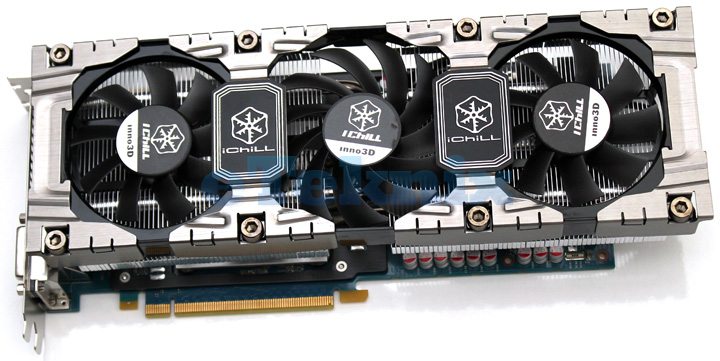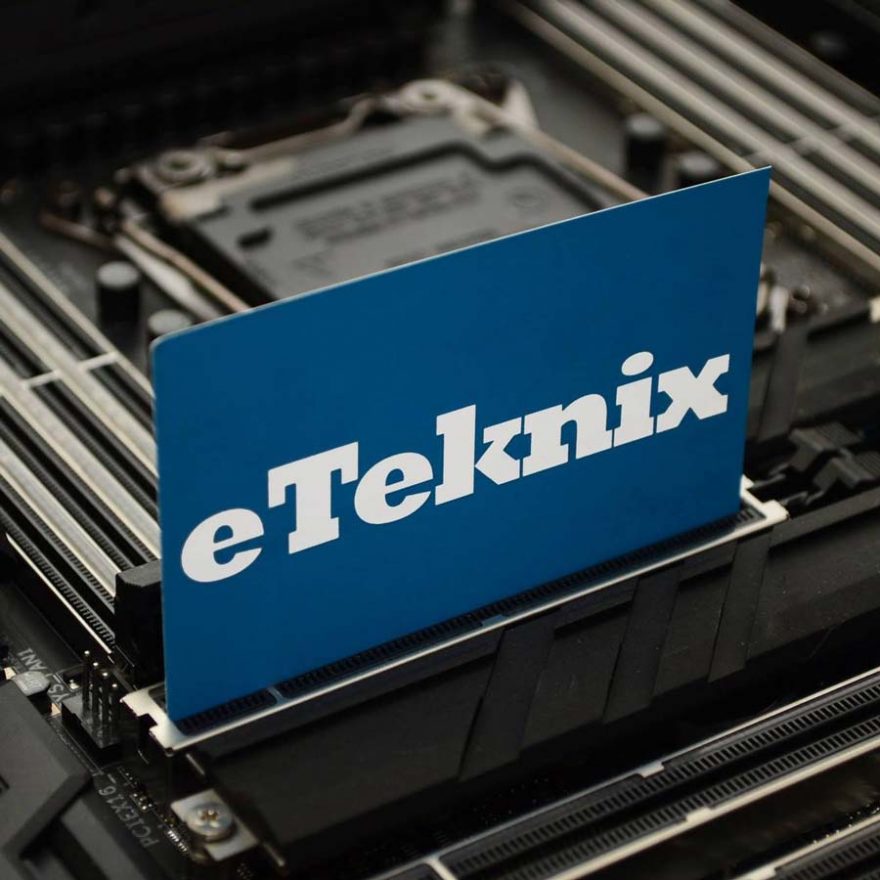Inno3D iChiLL GTX 670 HerculeZ 3000 Edition 2GB Graphics Card Review
Andy Ruffell / 13 years ago
Moving the accessories to one side and making a lot of available room, we manage to barely squeeze the card into shot as it simply is HUGE. The cooler literally swallows the card with a triple fan design consisting of a massive metal shrouding, held together with Allen key bolts.
This has to be by far one of the biggest coolers we’ve ever seen upon a graphics card, and this should hopefully mean some fantastic results when it comes to cooling and graphical performance.

The three fans sit below the metal shrouding and brand the iChiLL and Inno3D logos. Just underneath we get a glimpse of the two large aluminium heatsinks with connecting heatpipes which pass through the baseplate, which sits on the GTX 670 GPU core.

From this view, we can get a closer look at the cooler and what makes it up. We can also see a black plate that sits just on top of the card’s PCB. This plate gives extra stability to the card due to the sheer weight and follows the PCB to the top and wraps over the very top of the card. We can also see from this angle, that even though the expansion slot takes up two slots, due to the size of the cooler, a third slot is needed inside your chassis.

It’s also worth noting that the cooler has a unique design in that certain aspects can be removed for more powerful cooling or to clear the cooler more thoroughly.

Along the top of the card, we are graced with a single 6-pin PCIe power connector, and a single 8-pin PCIe power connector opposed to a twin 6-pin connector that we’re used to.

We also have two SLI bridge connectors for those wanting to utilise multi-GPU technology, though this could cause difficult with the size of the card and the size of your chassis, especially if looking to run more than two cards in a SLI configuration.

Finally moving over to the rear I/O of the card, we can see a standard GTX 670 layout with DVI-I and DVI-D connectors as well as a single HDMI connector and DisplayPort connector also.
With these connections and the card being part of the 600 series from Nvidia, we are able to run Nvidia Surround from a variety of connectors, whereas previous generation cards required another in SLI to utilise multi-display technology.

With the GTX 670 set to offer extreme performance for those wanting to spend a little less, we find Inno3D overclocking the card at their factory, and giving faster speeds than that of the GTX 680. We see the GPU clock speed increased from the stock 915MHz to a stonking 1020MHz and a boost clock of 1098MHz.
One thing that is really refreshing is the fact that Inno3D have also decided to increase the memory clock speed as well from 1500MHz to 1533MHz (6212MHz Effective). A lot of board partners simply believe that increasing the GPU clock is enough, but Inno3D really wanted to stand out, as if the cooler hadn’t already done a great job of doing so.
Other specifications stay the same with 2GB of GDDR5 memory on a 256-bit interface, based around the GK104 28nm GPU core.




















